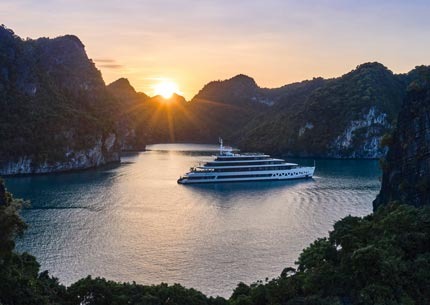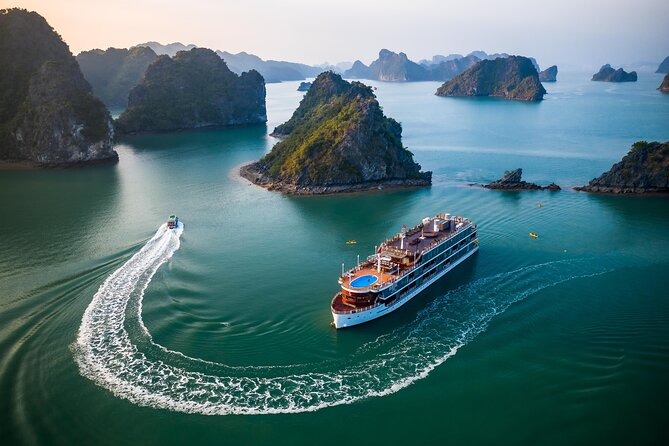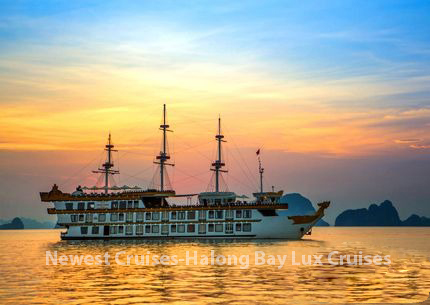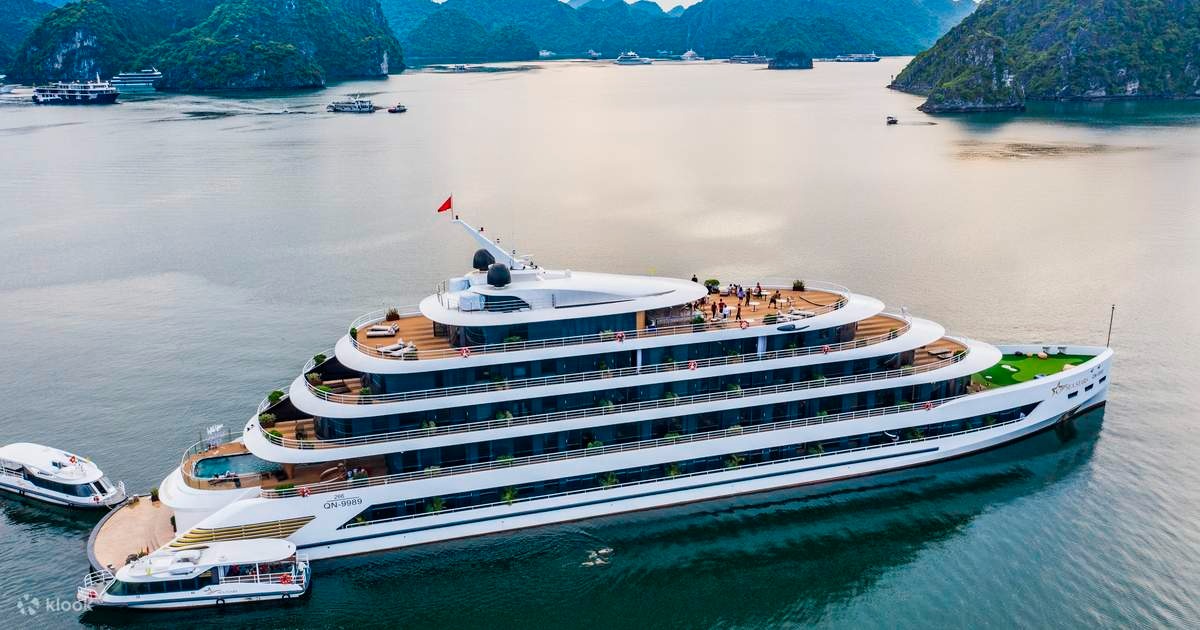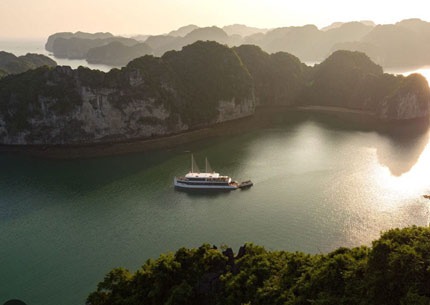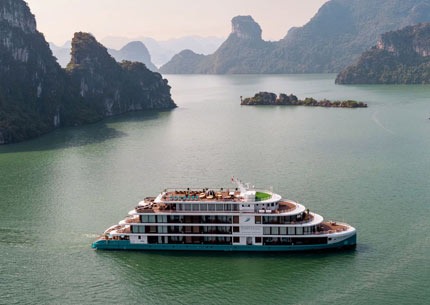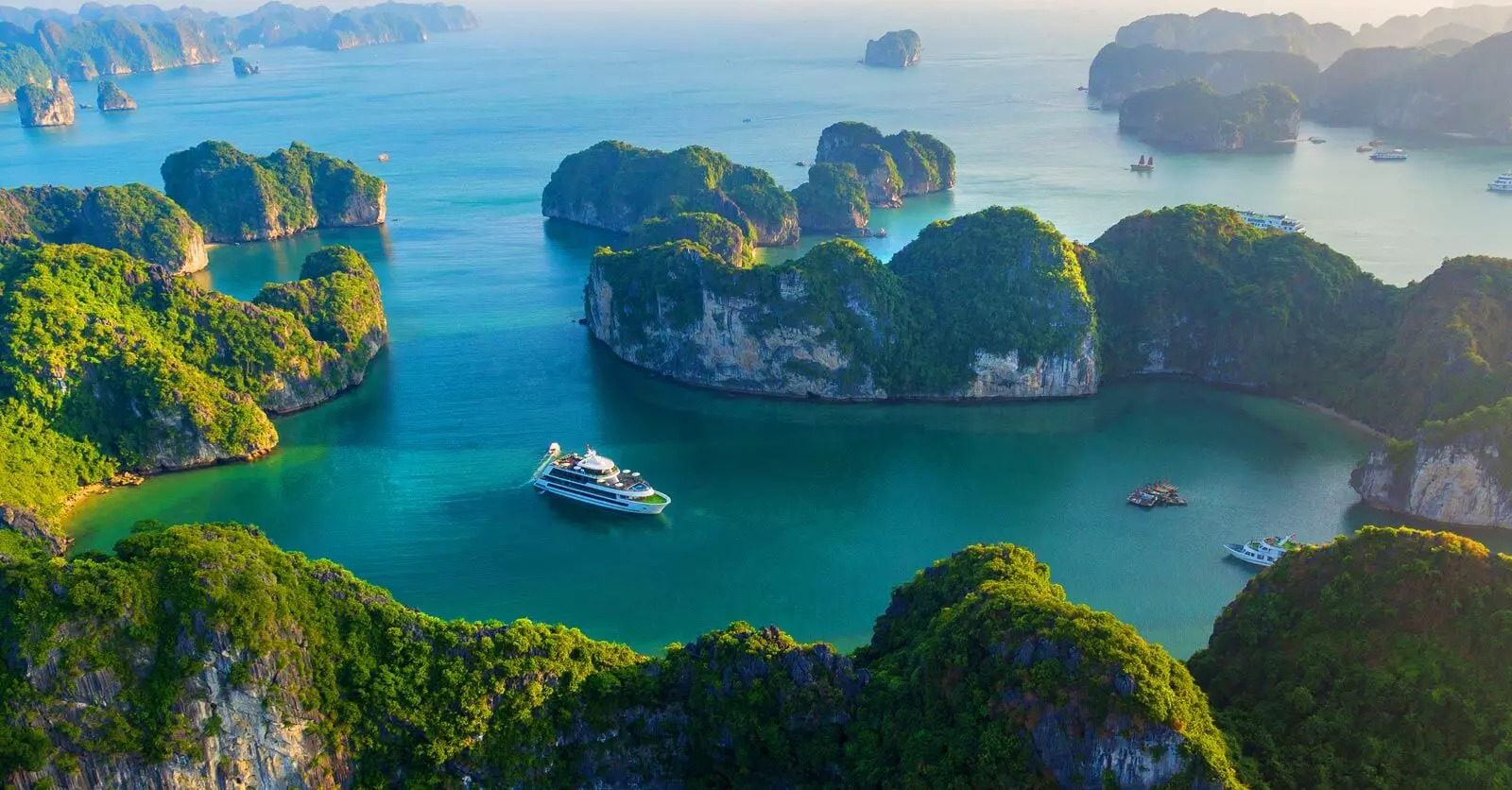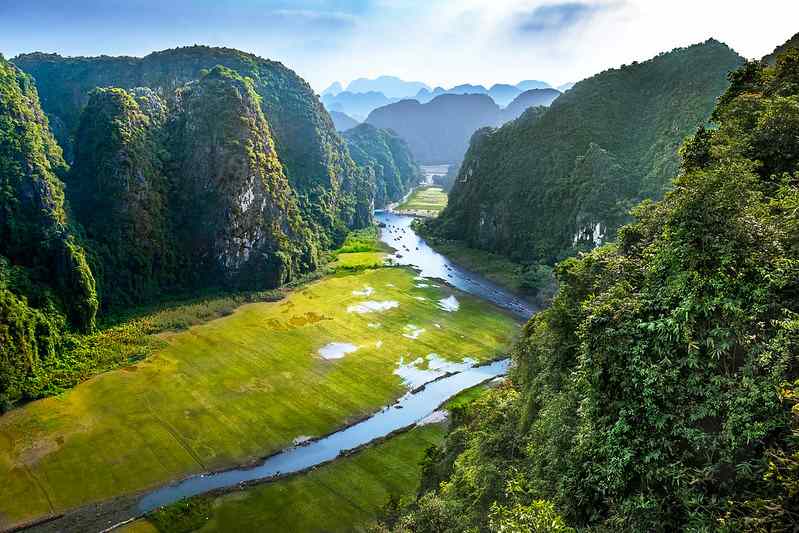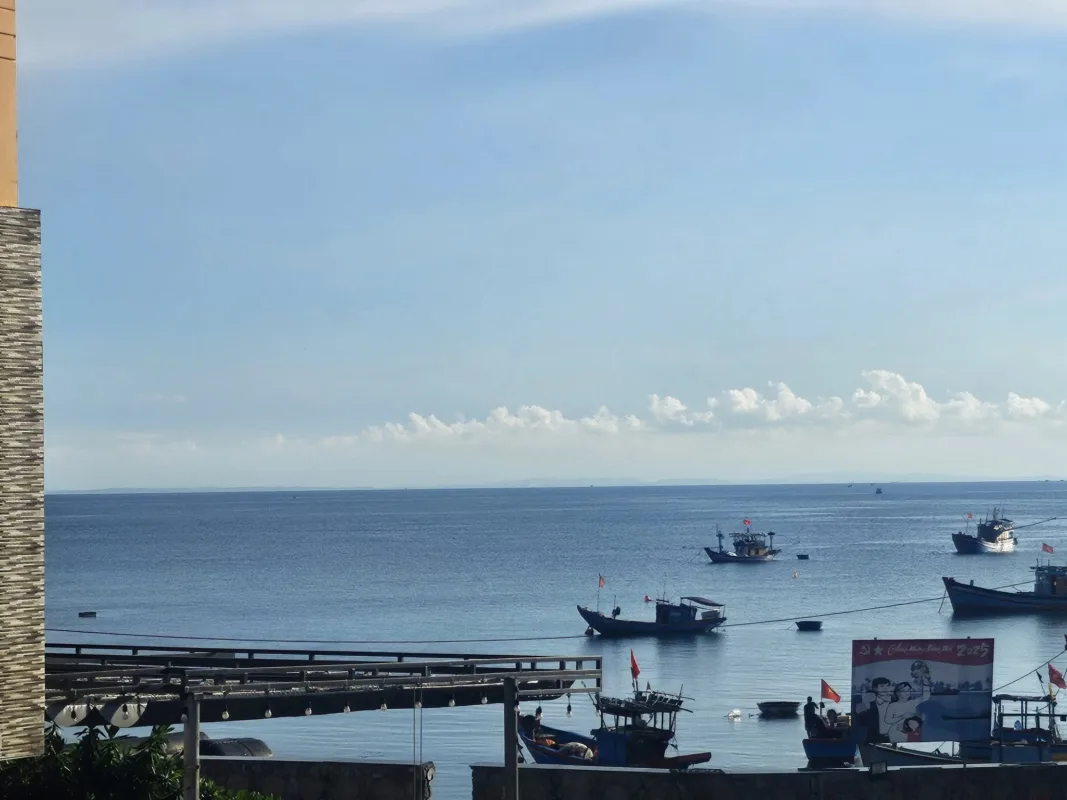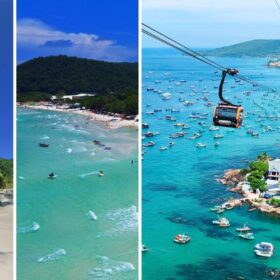Phu Quoc Tour Cancelled by Typhoon: 15 Essential Facts for 2025-2026 Travelers
Planning a tropical getaway to Vietnam’s pearl island? Before you finalize your itinerary, understanding typhoon risks could save your vacation.
When paradise meets powerful storms, travelers need reliable information. As Phu Quoc Island continues growing as Vietnam’s premier beach destination, climate challenges demand smart preparation.
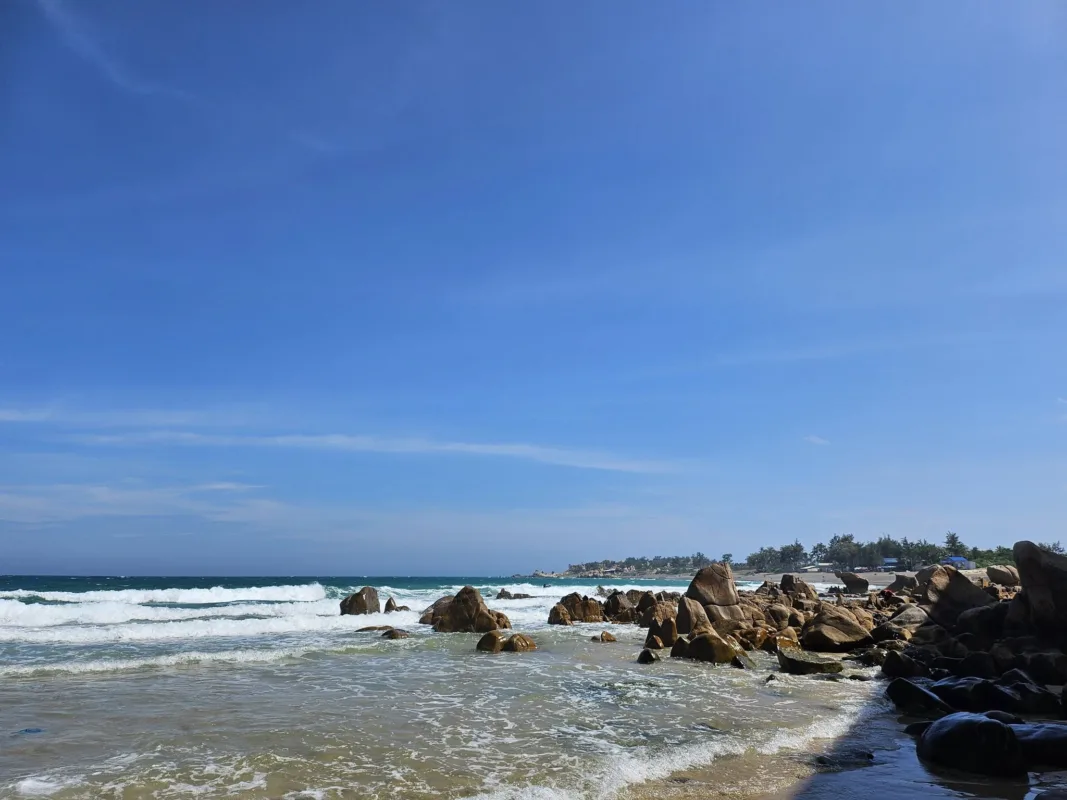
Understanding Phu Quoc’s Typhoon Season: Critical 2025-2026 Forecast
The tropical paradise of Phu Quoc faces increasing weather volatility as climate patterns shift across Southeast Asia. According to the latest meteorological data from the Vietnam National Center for Hydro-Meteorological Forecasting, the 2025-2026 typhoon season presents unique challenges for travelers.
Typhoon season in Phu Quoc typically spans from June through November, with the most severe weather conditions occurring between August and October. The 2025 forecast indicates a potential 30% increase in tropical storm activity compared to previous years, with 5-7 significant weather systems expected to affect the Gulf of Thailand region.
Recent historical data shows concerning trends:
- 2023: 4 major storms affected Phu Quoc tourism operations
- 2024: 6 weather events caused tour cancellations lasting 2-5 days each
- 2025-2026 Projection: Up to 7 significant weather events possible
For comparison, Halong Bay in northern Vietnam experiences a different storm season (July-September), making it an excellent alternative when Phu Quoc faces weather disruptions. Many travelers enjoy 5-star cruising experiences in Halong Bay during Phu Quoc’s most volatile months.
Monthly Risk Assessment for Phu Quoc (2025-2026)
| Month | Typhoon Risk | Average Rain (mm) | Cancellation Probability
|
|---|---|---|---|
| January | Very Low | 35 | 2% |
| February | Very Low | 28 | 1% |
| March | Very Low | 54 | 3% |
| April | Low | 137 | 5% |
| May | Moderate | 228 | 12% |
| June | Moderate-High | 314 | 25% |
| July | High | 358 | 35% |
| August | Very High | 387 | 45% |
| September | Very High | 402 | 50% |
| October | High | 335 | 30% |
| November | Moderate | 246 | 15% |
| December | Low | 70 | 5% |
How Tour Cancellations Work: Regulations and Reality in 2025
When typhoons threaten Phu Quoc, a structured system determines whether tours operate or cancel. Understanding this process helps travelers manage expectations and plan effectively.
The Maritime Administration of Phu Quoc implements a color-coded warning system that dictates when boat tours must suspend operations:
- Level 1 (Yellow): Winds 20-33 knots – Small boat tours suspended
- Level 2 (Orange): Winds 34-47 knots – All tourist boats grounded
- Level 3 (Red): Winds exceeding 48 knots – Complete maritime shutdown
What many travelers don’t realize is that authorities often issue preemptive cancellations 24-48 hours before expected storm impacts. This means even seemingly good weather days can see tour cancellations if meteorologists predict deteriorating conditions.
Key regulation updates for 2025-2026:
- Stricter enforcement of 2.0-meter wave height limitations (reduced from 2.5m)
- Mandatory suspension of operations when visibility drops below 1 kilometer
- Extended post-storm safety period (now 36 hours after weather normalizes)
According to Vietnam’s Department of Tourism statistics, approximately 18% of all scheduled Phu Quoc boat tours experienced weather-related cancellations during the 2024 season—a figure projected to reach 22% in 2025-2026.
Tour Operator Compliance Standards
All licensed tour providers in Phu Quoc must adhere to strict safety protocols, including:
- Real-time monitoring of weather alerts
- Immediate notification to customers (minimum 4 hours before departure)
- Documented cancellation procedures with clear refund timelines
- Alternative activity offerings when weather permits
For travelers seeking more reliable cruising experiences, the northern regions of Vietnam offer more predictable conditions during Phu Quoc’s storm season. Halong Bay luxury cruises provide stunning karst seascapes with carefully managed weather protocols during most months.
Financial Impacts: Refund Policies and Insurance Coverage for 2025-2026
When typhoons disrupt travel plans in Phu Quoc, understanding the financial implications becomes crucial. The 2025-2026 season brings updated policies that every traveler should know before booking.
Most reputable tour operators in Phu Quoc now offer standardized refund structures:
- 100% refund: When the operator cancels due to official weather warnings
- 75-90% refund: When customers cancel 24-48 hours before departure based on forecasted storms
- 50-75% refund: For cancellations 72+ hours before departure with weather concerns
- Credit vouchers: Many operators offer 110-120% value in future booking credits instead of cash refunds
Leading companies like Phu Quoc Explorer, John’s Tours, and VinWonders have implemented digital refund processing, with most travelers receiving funds within 7-10 business days—a significant improvement from the 14-21 day processing time in previous years.
Travel Insurance Considerations
Standard travel insurance often contains significant gaps in coverage. According to industry analysis, only 63% of basic policies adequately cover typhoon-related cancellations. For 2025-2026 travel to Phu Quoc, experts recommend:
- “Cancel For Any Reason” (CFAR) coverage: While costing 40-50% more than standard policies, CFAR insurance allows cancellation without specific justification
- Weather-specific endorsements: Add-on coverage specifically for extreme weather events
- Minimum coverage thresholds: $3,000 for trip interruption and $150,000 for emergency evacuation
Premium insurers like World Nomads, Allianz, and AIG now offer Vietnam-specific packages with enhanced storm coverage for approximately $12-18 per day of coverage—particularly valuable during the high-risk months of August through October.
When comparing options, remember that luxury cruises in Halong Bay often include complimentary weather protection guarantees not typically found with Phu Quoc operators.
Real-Time Monitoring: Essential Apps and Resources for 2025-2026
Staying informed about developing weather systems is your best defense against disrupted travel plans. For 2025-2026 Phu Quoc visitors, several technological tools provide crucial insights beyond standard weather apps.
The most reliable resources include:
- Windy.com: Offers high-resolution wind, wave, and precipitation forecasts specifically calibrated for the Gulf of Thailand region
- Vietnam Disaster Monitoring System (VinDMS): The official government platform provides real-time alerts in English
- Storm Radar by Weather Channel: Recently enhanced its Southeast Asia coverage with 15-minute update intervals
- Phu Quoc Tourism Safety App: Launched in late 2024, this official application delivers instant tour cancellation notices and safety advisories
Many travelers don’t realize that cellular networks may become unreliable during severe weather. The Phu Quoc Emergency Beacon system, installed in 2024 across major resorts and tourist areas, provides Wi-Fi-based alerts even when mobile networks fail.
Tracking Systems Comparison
| Application | Forecast Accuracy | Update Frequency | Offline Capability | Storm Track Visualization
|
|---|---|---|---|---|
| Windy.com | 89% | 1 hour | Limited | Excellent |
| VinDMS | 92% | 30 minutes | No | Good |
| Storm Radar | 87% | 15 minutes | Yes | Excellent |
| PQ Tourism App | 90% | Real-time | Yes | Limited |
For travelers exploring multiple Vietnamese destinations, comprehensive monitoring becomes even more critical. Consider that 3-day luxury cruises in northern Vietnam’s Halong Bay operate in different weather patterns than southern Phu Quoc, requiring separate monitoring approaches.
Alternative Activities: What to Do When Your Phu Quoc Tour Gets Cancelled
When typhoons disrupt your original plans, Phu Quoc offers numerous indoor and sheltered alternatives that showcase the island’s diverse attractions beyond its beaches. Smart travelers prepare secondary itineraries for weather contingencies.
Indoor Cultural Experiences
The island’s rapid development has created world-class indoor options:
- Phu Quoc Museum of History and Culture: Recently expanded in 2024 to 8,600 square meters with interactive exhibitions on island heritage
- Sim Wine Tasting Experience: Tour the 15,000-square-meter facility showcasing the unique process of creating wine from Phu Quoc’s native sim fruit
- Pearl Cultivation Center: The 2025 expansion includes a 4,500-square-meter exhibition hall demonstrating the entire pearl farming process with hands-on activities
Culinary Adventures During Storm Delays
Phu Quoc’s reputation as a gastronomic destination makes food tours excellent rainy-day alternatives:
- The Night Market Food Crawl: Now partially covered with 75 vendors offering island specialties
- Fish Sauce Factory Tours: The Nam Duong and Red Boat factories provide fascinating insights into the production of Vietnam’s culinary cornerstone
- Cooking Classes at Premier Resorts: Many luxury properties offer 3-4 hour cooking experiences featuring Phu Quoc specialties like rock lobster and herbal chicken
Wellness and Relaxation Alternatives
Phu Quoc’s luxury spa scene thrives regardless of weather conditions:
- Fusion Resort’s Maia Spa: The 11,000-square-meter facility offers traditional Vietnamese treatments using local ingredients
- JW Marriott Emerald Bay Spa: Their signature “Storm Calm” treatment was specifically designed for typhoon season visitors
- Thai-Cham Wellness Complex: Opened in 2024, this 6,500-square-meter facility combines ancient healing traditions from across Southeast Asia
For travelers with flexible schedules, consider that northern Vietnam experiences different weather patterns than Phu Quoc. A luxury cruise in Halong Bay often provides perfect sailing conditions while southern regions face storms.
Rescheduling Strategies: Salvaging Your Phu Quoc Vacation in 2025-2026
When typhoons force tour cancellations, quick and strategic rescheduling can save your Phu Quoc experience. The island’s tourism infrastructure has evolved to accommodate weather disruptions more efficiently than ever before.
Timing Your Recovery Plan
Meteorological data shows that most typhoon systems affecting Phu Quoc follow predictable patterns:
- Duration of direct impact: Typically 24-36 hours
- Residual high seas: 24-48 hours after winds subside
- Return to tour operations: Usually 2-3 days after storm passage
This timeline means travelers should anticipate approximately 72 hours of disruption for each significant weather event. Planning a 7-day stay provides statistical insurance against complete vacation disruption, as even during peak typhoon season, consecutive systems rarely affect the island without 3-4 day breaks between them.
Working with Tour Providers
Major Phu Quoc operators have developed sophisticated rescheduling systems:
- Priority rebooking: Cancelled tours receive first access to next available departures
- Condensed experiences: Some operators offer abbreviated versions of standard tours that can be completed during shorter weather windows
- Cross-booking agreements: A network of 15+ major operators honor each other’s bookings when capacity allows
The newly implemented “Phu Quoc Tour Recovery Program” coordinates between hotels, tour operators, and transportation services to streamline rescheduling. In 2024, this system successfully rebooked 78% of cancelled tours within travelers’ original stay dates.
Flexible Itinerary Design
Experienced Vietnam travelers often employ a split-destination strategy during typhoon season:
- Begin with 3-4 days in Phu Quoc
- Plan 2-3 days in Ho Chi Minh City or the Mekong Delta
- Return to Phu Quoc for 2-3 more days
This approach creates two separate windows for weather-dependent activities, dramatically increasing your chances of experiencing Phu Quoc’s marine attractions.
For travelers seeking consistently reliable cruising experiences regardless of season, Halong Bay luxury cruises operate year-round with excellent contingency planning and weather conditions that differ from Phu Quoc’s patterns.
Safety Protocols: Before, During and After Typhoons in Phu Quoc
Visitor safety during typhoon events has become a top priority for Phu Quoc authorities, with comprehensive systems developed for the 2025-2026 season. Understanding these protocols ensures both physical safety and peace of mind.
Pre-Storm Preparations
When typhoon warnings are issued, Phu Quoc activates a multi-tier response system:
- 72 hours before projected impact: Initial advisories distributed to all accommodations
- 48 hours before: Tourist police begin beach closure procedures
- 24 hours before: Emergency supply distribution and shelter designations announced
All major hotels and resorts now maintain typhoon preparedness kits for guests, including:
- Emergency water supplies (3 liters per person per day)
- Non-perishable food provisions
- Battery-operated lighting
- Updated evacuation maps
The recently completed network of 7 typhoon shelters across Phu Quoc can accommodate up to 25,000 people, with all facilities located above the 10-meter elevation mark for storm surge protection.
During-Storm Safety Measures
When a typhoon makes landfall, strict safety protocols take effect:
- Movement restrictions within designated safe zones
- Regular status updates via the emergency broadcast system
- Medical response teams stationed at major accommodation clusters
The Phu Quoc Emergency Response Center, completed in 2024 at a cost of $12 million, coordinates all safety operations with a staff of 75 professionals and state-of-the-art monitoring equipment.
Post-Storm Recovery
After the storm passes, a systematic process ensures tourist safety:
- Professional assessment of all tour routes and facilities
- Water quality testing at major beaches and swimming areas
- Infrastructure verification before activity resumption
Travelers should know that standard recovery time varies by activity:
- Indoor attractions: Usually operational within 6-12 hours
- Beach activities: Typically resume after 24-36 hours
- Boat tours: Often require 48-72 hours for safe resumption
While Phu Quoc continues enhancing its weather safety systems, northern Vietnam’s Halong Bay has long been renowned for its sophisticated weather management protocols and predictable sailing conditions across most seasons.
Climate Change Impact: Future Projections for Phu Quoc Typhoons
The long-term outlook for Phu Quoc’s weather patterns reveals important trends that travelers should consider when planning future visits. Climate scientists project significant shifts that will influence tourism in the coming years.
2025-2030 Typhoon Trend Analysis
Research from Vietnam’s Institute of Meteorology and Climate Change indicates several key developments:
- Increasing intensity: Average typhoon strength affecting Phu Quoc is projected to increase by 15-20% by 2030
- Shifting season: The traditional June-November typhoon window is expanding, with significant storms now possible from May through December
- Recovery periods: Post-storm environmental recovery (water clarity, beach conditions) is taking 30% longer than historical averages
These changes directly impact tourism operations, with tour cancellation rates expected to increase from the current 18% to approximately 25% by 2028 during peak season months.
Adaptation Strategies in Tourism
Phu Quoc’s tourism industry is responding proactively to these challenges with innovative approaches:
- Floating infrastructure: New tour facilities designed to rise and fall with water levels
- Storm-resistant vessels: Next-generation tour boats with enhanced stability in rough conditions
- Virtual experiences: Augmented and virtual reality options that recreate marine experiences during inclement weather
The island’s $45 million Climate Resilience Investment Program, launched in 2024, aims to create weather-adaptive tourism infrastructure that can operate safely under increasingly volatile conditions.
Geographic Alternatives Within Vietnam
Climate data clearly shows that different regions of Vietnam experience distinct weather patterns. While southern destinations like Phu Quoc face increasing typhoon challenges, northern areas often offer more predictable conditions.
For travelers seeking reliable cruising experiences with minimal disruption risk, Halong Bay’s limestone seascapes provide world-class natural beauty with different weather patterns than Phu Quoc. The 2-day luxury cruises and 3-day immersive journeys through Halong and Lan Ha Bays offer UNESCO-recognized landscapes with sophisticated weather management systems.
Traveler Experiences: Real Stories from Phu Quoc’s 2024 Typhoon Season
Understanding how recent visitors navigated typhoon disruptions provides valuable insights for future travelers. These firsthand accounts from the 2024 season highlight both challenges and successful adaptation strategies.
Case Study: The Wilson Family’s Flexible Approach
The Wilson family from Australia arrived in Phu Quoc just as Typhoon Noru approached in August 2024. Their experience illustrates effective contingency planning:
“We had a 10-day stay planned with three different boat tours scheduled. When the storm warning came, our first reaction was panic, but our hotel’s guest services manager immediately helped us restructure our entire itinerary. We moved our indoor activities to the storm days, and the tour company rescheduled our cancelled snorkeling trip to day 8 of our stay. We ended up experiencing everything we planned—just in a different order.” – James Wilson, 42, Sydney
Key takeaway: Building flexibility into your itinerary allows for successful adaptation.
Case Study: Solo Traveler Pivot Strategy
Sophia Chen, a digital nomad from Singapore, employed a multi-destination strategy during her Vietnam trip:
“When my Phu Quoc tours were cancelled, I immediately booked a next-day flight to Hanoi and arranged a 3-day cruise in Halong Bay. The weather there was perfect, with sunny skies and calm waters while storms battered the south. I returned to Phu Quoc for my final three days when conditions improved. This split approach actually enhanced my Vietnam experience by adding an unexpected but amazing destination.” – Sophia Chen, 35, Singapore
Key takeaway: Consider a split-destination approach during high-risk months.
Case Study: Resort-Based Recovery
The Martinez couple from Spain found that choosing the right accommodation made all the difference:
“We selected a resort with extensive indoor facilities specifically because we were traveling during typhoon season. When our boat tour was cancelled, we participated in a cooking class, enjoyed spa treatments, and attended cultural performances without ever leaving the property. The resort’s typhoon recovery package even included a complimentary sunset cruise once conditions improved.” – Eduardo Martinez, 51, Barcelona
Key takeaway: Resort selection becomes critically important during storm season, with comprehensive facilities offering valuable alternatives.
These real experiences demonstrate that with proper planning and flexibility, even typhoon disruptions can be managed without sacrificing the overall vacation experience in Vietnam.
Communication Strategies: Staying Informed in Phu Quoc During Weather Events
Effective communication becomes crucial when weather disrupts Phu Quoc travel plans. The island’s communication infrastructure has seen significant enhancements for the 2025-2026 season to ensure travelers remain informed throughout weather events.
Pre-Arrival Communication Tools
Before even reaching Phu Quoc, travelers can access several reliable information sources:
- Phu Quoc Tourism Weather Alert System: A subscription-based SMS and email service providing 7-day forecasts and alerts (register at phuquoctourism.vn)
- Vietnam Airlines Weather Advisory: Integrated with booking confirmations, providing automatic updates for passengers with Phu Quoc itineraries
- Hotel Pre-Arrival Contacts: Major properties now assign pre-arrival concierges who initiate contact 72 hours before check-in with weather briefings
These proactive communication channels help travelers make informed decisions before departure, potentially saving thousands in cancellation fees and disruption costs.
On-Island Communication Networks
Once in Phu Quoc, several systems ensure continuous information flow even during severe weather:
- Emergency Wi-Fi Network: A separate, typhoon-hardened system covering 92% of tourist areas, accessible with accommodation booking details
- Multi-lingual Alert System: Broadcasts in 8 languages including English, Mandarin, Korean, Russian, and Japanese
- Digital Information Kiosks: 14 weather-protected touchscreen stations across the island providing real-time updates
The 2024 implementation of the Phu Quoc Tourist Support Hotline (1800-8168) provides 24/7 assistance with English, Chinese, and Korean-speaking operators specifically trained in weather emergency procedures.
Post-Cancellation Communication Protocol
When tours are cancelled, a structured communication process keeps travelers informed:
- Initial cancellation notification (SMS, email, and app push alert)
- Alternatives presentation (usually within 2 hours of cancellation)
- Rebooking confirmation with updated weather assessments
- All-clear notifications when activities can resume
This systematic approach replaced the fragmented communication of previous years, significantly reducing visitor frustration during disruptions.
For travelers seeking destinations with established weather communication systems, northern Vietnam’s Halong Bay has pioneered advanced protocols that often serve as models for emerging destinations like Phu Quoc.
Seasonal Comparisons: When to Visit Phu Quoc with Minimal Disruption Risk
Strategic timing dramatically affects your chances of experiencing Phu Quoc without typhoon disruptions. Understanding the island’s distinct seasonal patterns helps travelers select optimal visit windows.
Phu Quoc’s Four Distinct Seasons
The island experiences more nuanced seasons than many travelers realize:
- High Season (November-February): Minimal rain (30-45mm monthly), negligible typhoon risk, comfortable temperatures (25-28°C), but peak crowds and pricing
- Shoulder Season (March-April, October): Moderate rain (120-200mm monthly), low typhoon risk, warm temperatures (27-32°C), and reasonable visitor numbers
- Early Wet Season (May-June): Increasing rain (250-300mm monthly), moderate typhoon risk, high humidity, but fewer visitors and excellent value
- Peak Wet Season (July-September): Heavy rainfall (350-400mm monthly), highest typhoon risk (40-50% chance of disruption), extreme humidity, but lowest pricing and occupancy
The data reveals a crucial insight: the November-February window offers a statistical 98% chance of completing all planned boat tours without weather disruptions—though this comes with approximately 30-40% higher pricing compared to wet season visits.
Month-by-Month Risk Assessment (2025-2026)
| Month | Typhoon Risk | Tour Cancellation Probability | Average Daily Cost | Crowd Level
|
|---|---|---|---|---|
| January | 1% | 2% | $165 | Very High |
| February | 1% | 2% | $175 | Very High |
| March | 2% | 4% | $140 | High |
| April | 4% | 7% | $125 | Moderate |
| May | 10% | 15% | $100 | Low-Moderate |
| June | 20% | 28% | $90 | Low |
| July | 30% | 38% | $85 | Very Low |
| August | 45% | 52% | $80 | Very Low |
| September | 50% | 55% | $85 | Very Low |
| October | 25% | 30% | $110 | Moderate |
| November | 8% | 12% | $135 | High |
| December | 2% | 5% | $155 | Very High |
Geographic Alternatives During High-Risk Months
Vietnam’s diverse climate zones create opportunities for travelers to experience similar attractions with different weather patterns. When Phu Quoc faces its highest typhoon risk (July-September), these alternatives offer excellent experiences:
- Halong Bay (Northern Vietnam): Often experiencing its most stable weather when Phu Quoc sees storms, the luxury cruises in Halong Bay provide world-class seascapes with minimal disruption risk during these months
- Con Dao Islands: Located further east than Phu Quoc, this archipelago often avoids the worst Gulf of Thailand weather systems
- Nha Trang: The central coast experiences a different monsoon cycle, often providing clear conditions when Phu Quoc faces storms
For travelers with flexible itineraries, combining Phu Quoc with Halong Bay cruising experiences creates a balanced Vietnam journey with built-in weather contingencies.
Technology Solutions: Apps and Tools for Typhoon Season Travelers
The digital landscape for weather monitoring has evolved significantly, with specialized tools now available to help Phu Quoc visitors navigate typhoon season. These technological solutions provide unprecedented accuracy and convenience.
Essential Weather Monitoring Applications
Several applications stand out for their specialized coverage of Phu Quoc’s maritime conditions:
- WindFinder Pro: Offers hourly wave height predictions with 85% accuracy for specific Phu Quoc beaches and surrounding islands
- Rain Alarm: Provides hyperlocal precipitation alerts with a 15-minute warning before rainfall reaches your specific location
- Vietnam Weather Radar: The official meteorological department app with direct feeds from the Phu Quoc weather station’s Doppler radar
- Marine Weather by Buoyweather: Delivers detailed sea conditions for specific GPS coordinates around Phu Quoc
These specialized tools offer significantly more relevant data than general weather apps, with maritime-specific measurements that directly correlate with tour cancellation thresholds.
Integrated Travel Management Systems
Beyond weather monitoring, several platforms help coordinate your entire trip during disruptions:
- TripIt Pro: The 2025 version includes a new “Weather Disruption Assistant” that automatically suggests itinerary modifications based on forecasts
- SafetyWing Weather Alerts: This travel insurance app provides real-time warnings and instant documentation for weather-related claims
- Phu Quoc Tourist Assistant: The official destination app connects directly to tour operators’ rebooking systems
The most sophisticated solution, launched in late 2024, is WeatherProof Travel, which combines AI-driven forecasting with automatic rebooking algorithms that can shift your entire itinerary based on predicted weather patterns.
Virtual Experience Alternatives
When physical tours are impossible, virtual options now provide compelling alternatives:
- Phu Quoc VR Diving: Uses 8K underwater footage to recreate the island’s premier dive sites
- Immersive Island Explorer: A mixed reality experience available at select resorts that combines physical environments with digital overlays
- Cultural Heritage AR: Augmented reality experiences that transform indoor spaces with virtual demonstrations of local crafts and traditions
While technology offers valuable tools for managing weather disruptions in Phu Quoc, many travelers also consider alternative destinations with more predictable conditions. The limestone karst seascapes of Halong Bay offer comparably spectacular natural beauty with different weather patterns and sophisticated management systems for an uninterrupted Vietnamese cruise experience.
Expert Insights: Tour Operator Perspectives on Typhoon Management
Industry professionals who navigate Phu Quoc’s weather challenges daily offer valuable insights for travelers. These experienced voices provide practical wisdom that goes beyond standard travel advice.
Interview Highlights with Phu Quoc Tour Specialists
Mai Thanh, Operations Director, Phu Quoc Explorer Tours (15 years experience):
“The biggest mistake travelers make is booking their most anticipated activities on day one. Always save the first and last days for flexible activities that aren’t weather-dependent. Schedule your must-do experiences in the middle of your stay—this gives us maximum flexibility for rescheduling if needed.”
James Nguyen, Marine Safety Coordinator, Blue Ocean Adventures:
“We’ve completely redesigned our cancellation policies for 2025-2026. Instead of simple refunds, we now offer enhanced value vouchers—125% of your original booking value if you reschedule within your stay, or 110% if you return within 12 months. This approach has transformed disappointment into anticipation for many guests.”
Dr. Linh Tran, Climate Adaptation Consultant for Vietnam Tourism Board:
“Phu Quoc’s infrastructure has evolved significantly since 2023. We now have seven designated activity zones with weather-protected facilities that operate regardless of conditions. The days of complete activity shutdown during storms are behind us—today, it’s about strategic pivoting to alternative experiences.”
Operational Insights from 2024 Season
Tour operators report several key learnings from the 2024 typhoon season:
- Morning activities had a 27% higher completion rate than afternoon tours during storm season
- Small-group tours (8 people or fewer) were rescheduled successfully 68% of the time, compared to just 42% for large groups
- Customers who booked through hotels faced longer refund processing (average 12 days) than direct bookings (average 5 days)
- Tours with multiple activity components were able to partially operate 45% of the time by modifying rather than cancelling entirely
These operational insights help travelers make informed decisions about tour selection during high-risk periods.
Industry Forecast for 2025-2026
Tour professionals anticipate several key developments for the coming seasons:
- Introduction of weather guarantees for premium tour packages
- Increased use of fast, stable catamaran designs that can operate in moderate chop
- Development of hybrid indoor-outdoor experiences that adapt to conditions in real-time
- Implementation of dynamic pricing that reflects actual weather risk for specific dates
For travelers seeking consistently reliable cruising experiences regardless of season, many industry experts recommend exploring options in northern Vietnam. The luxury cruises through Halong Bay have pioneered many of the weather adaptation strategies now being implemented in Phu Quoc.
Planning Your Typhoon-Proof Phu Quoc Vacation: Practical Tips for 2025-2026
Creating a storm-resistant Phu Quoc itinerary requires strategic planning and insider knowledge. These practical recommendations consolidate lessons from experienced travelers and industry experts to maximize your chances of an unforgettable experience regardless of weather challenges.
Strategic Itinerary Construction
Build your schedule with these weather-conscious principles:
- Buffer Day Strategy: For every two planned boat tours, include one flexible “buffer day” that can accommodate rescheduled activities
- Activity Sequencing: Schedule indoor activities (museums, cooking classes) for days 1-2 of your stay, boat tours for middle days, and flexible activities for final days
- Morning Priority: Book water-dependent activities before 11am when possible—morning conditions are statistically 30% more stable during typhoon season
- Geographic Diversity: Include activities from different parts of the island, as weather conditions can vary significantly between the north and south shores
Sample 7-Day Typhoon-Season Itinerary:
- Arrival + Phu Quoc Museum + Night Market (indoor/covered)
- Pepper Farm Tour + Sim Wine Tasting (weather-independent)
- AM Snorkeling Trip + Afternoon Buffer (priority water activity)
- Full Day Boat Tour to An Thoi Islands (peak experience)
- Flexible Buffer Day (for rescheduling if needed)
- Morning Fishing Village Tour + Afternoon Cooking Class
- Sunrise Beach Time + Departure (low-commitment final day)
Accommodation Selection Strategy
Your choice of lodging significantly impacts your ability to manage weather disruptions:
- Resort Ecosystems: Properties like JW Marriott, Fusion, and InterContinental offer extensive on-site activities that continue during inclement weather
- Strategic Locations: Northern Phu Quoc accommodations experience approximately 15% less rainfall than southern properties during typhoon season
- Weather Guarantees: Several premium properties now offer “weather satisfaction guarantees” with free nights or experiences if storms disrupt more than 50% of your stay
The newly designated Weather-Ready Accommodations certification (look for the blue umbrella logo) identifies properties with enhanced storm preparations and backup activity programs.
Communication and Booking Protocols
How you book and communicate can dramatically improve your experience:
- Direct Booking Advantage: Tours booked directly with operators have a 26% higher successful rescheduling rate than third-party bookings
- Advance Communication: Email tour providers 3-5 days before arrival mentioning potential weather concerns and requesting their rescheduling policy
- Weather Clause Requests: When booking, specifically ask for the “weather flexibility clause” to be noted in your reservation
- Local SIM Card: Purchase immediately upon arrival for reliable access to weather alerts and tour operator communications
For travelers seeking destinations with minimal weather disruption, consider that Halong Bay offers similar natural beauty with different weather patterns, making it an excellent complement or alternative to Phu Quoc during high-risk months.
Conclusion: Balancing Paradise and Preparedness in Phu Quoc
Phu Quoc Island remains one of Vietnam’s most captivating destinations, offering extraordinary natural beauty, cultural richness, and unforgettable experiences. While typhoons present real challenges during certain seasons, informed travelers can navigate these potential disruptions with confidence.
The key to a successful Phu Quoc experience during 2025-2026 lies in strategic planning, flexible expectations, and leveraging the island’s increasingly sophisticated weather management systems. By understanding cancellation policies, monitoring reliable forecasts, and building adaptive itineraries, visitors can experience the best of this tropical paradise while minimizing the impact of weather disruptions.
For travelers seeking the perfect balance of adventure and reliability, consider a multi-destination approach to Vietnam. The contrasting weather patterns between southern Phu Quoc and northern Halong Bay create opportunities for year-round exploration of Vietnam’s most spectacular coastal landscapes. The 2-day and 3-day luxury cruises through Halong’s limestone karst seascapes complement Phu Quoc’s tropical island experience perfectly.
Whether you’re planning a dedicated Phu Quoc vacation or a comprehensive journey through Vietnam, the key is preparation without paranoia. The vast majority of visitors—even during typhoon season—experience the magic of Phu Quoc without major disruptions. Those who do encounter weather challenges often discover unexpected delights as they explore the island’s diverse offerings beyond its famous beaches.
With the right approach, your 2025-2026 Phu Quoc adventure awaits—typhoons and all.
Book your luxury Halong Bay experience
Contact Halong Bay Lux Cruises now via Hotline | WhatsApp: +84.978.358.422 for pricing and special offers!
Thousands of travelers from Europe, UK, USA, and Australia have rated us 5-stars for our exceptional service and unforgettable Halong Bay luxury experience.
- Hotline | WhatsApp: +84.978.358.422
- Phone | WhatsApp: +84.962.261.687
- Email: halongbayluxcruises@gmail.com or vietnammarveltravel@gmail.com
- Website: halongbayluxcruises.com
- Reviews: Top Halong Bay Cruise Reviews on TripAdvisor
- Fanpage: https://www.facebook.com/halongbayluxcruises

